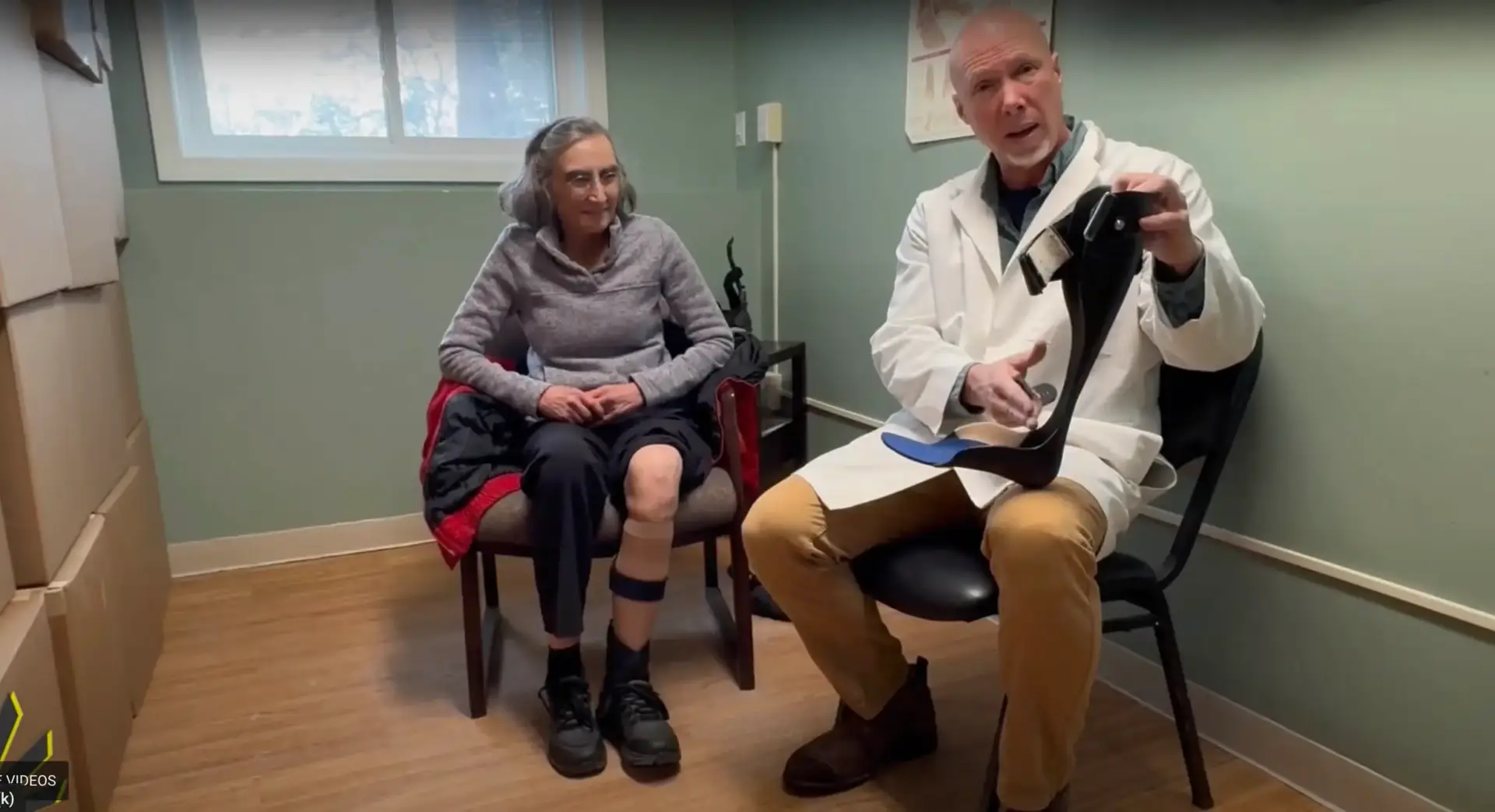Elaine Compares Her Carbon Fiber Brace with Step-Smart Brace for Drop Foot
Hi, it’s Ian, I’m with Elaine. Elaine comes
In this week’s video blog, we compare the differences between braces designed for toe off and braces designed for drop foot. Braces designed for toe off are supposed to help in gait with plantarflexion, not dorsiflexion. Braces designed for drop foot or foot drop are supposed to help in gait with dorsiflexion, or lifting the foot up and not pushing off with weak toes. Some of these toe off brace designs do give clearance at swing phase, allowing the toes to clear the ground while swinging the leg forward, but most do not help with shock absorption at heel strike. A key component to any good drop foot brace is the ability to slow the foot down at heel strike thereby preventing foot slap while also not restricting plantarflexion too much. The reality is that most of these toe off designs are not strong enough to assist in toe off. As seen in this video, the brace bends almost beyond its limit at about 15 lbs and most people weigh between 120 and 200 lbs. Even though the toe off is made of carbon fiber or mostly carbon fiber, the designs we have looked at can not handle weight over 100lbs and therefore the toe off benefit claimed is worthless in our opinion.
Video Transcript:
Hi, Ian here from Insightful Products. I was watching the MythBusters last night with my son and I realized that the type of science that is done on the MythBusters is kind of what we do in clinical practice. That is that it doesn’t have the rigorous P values and statistical analysis that you normally see in science, but you get a reasonable conclusion based on a few studies and kind of case work that allows you to make conclusions to help your patients.
So, with that disclaimer what I’m going to show you today is an opinion based on what I see as a practitioner. So, for Drop Foot a lot of practitioners are using this type of design. This type of design does work for clearance during swing phase and provides a reasonable amount of solution, but it’s really not designed for Drop Foot.
If you think about it, this rigid anterior tibial section is really designed for weak plantar flexors and the problem you have with Drop Foot is weak dorsiflexors. Why is this for weak plantar flexors? Well, the anterior section loads or controls the fore progression of the tibia through the lever arm and the anterior lever arm of the bottom of the brace. And so that’s really what this is meant to do and that is it’s meant to store energy during mid-stance and push the patient off at the end of stance phase.
You can take a look at how much this AFO here provides in terms of anterior support, you can see that a lot of the flexion is made even with just 12, 13 lbs. of pressure and obviously the typical person would be 100-200 lbs. maybe.
Dorsi flexors are what patients are missing when they have drop foot. So, the dorsi flexion motion is this when the foot comes up and so you need the dorsiflexors for two things one is when you first hit the ground you need that muscle group to decelerate the foot and to bring it into plantar flexion. But then you also need those dorsi flexors to bring the foot up at an angle so you can clear the ground, so you don’t trip on it.
Our design is specifically designed for drop foot. It addresses and controls only the parts of the deficit that you need to control. So, this design is specifically designed for weak dorsiflexors. What do I mean? Well, the dorsi flexors are what brings your foot up. And that’s what provides both clearance and shock absorption during heel strike. So, our design has a posterior section for weak dorsiflexors. It does not have a rigid anterior tibial section because for drop foot you don’t need it and it’s not desired. Why? Because this is approaching the problem from the back and that makes up for the weakness of the muscles in the front. So, the muscles in the front here are not operating so this replaces that by decelerating the foot at heel strike and then bringing up the foot for clearance during swing phase.
Hi, it’s Ian, I’m with Elaine. Elaine comes

Hi, it’s Ian from Insightful. I’m pleased to introduce you to Gail who came from Connecticut

Hey there, it’s Ian from Insightful. We have Chris here who came from Framingham, MA, and he has flail foot
367 U.S. Route 1, Suite 5-S
Falmouth, ME 04105
(207) 885-0414
faq@insightfulproducts.com

Site by Fisher Green Creative. LLC